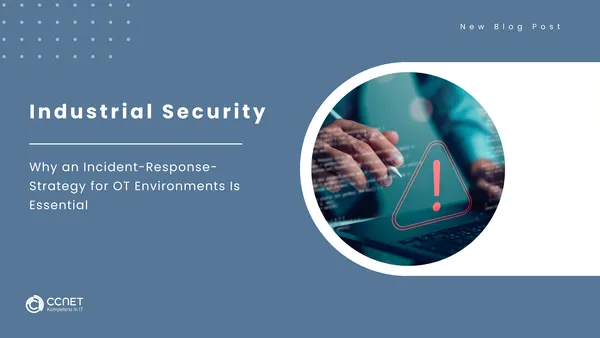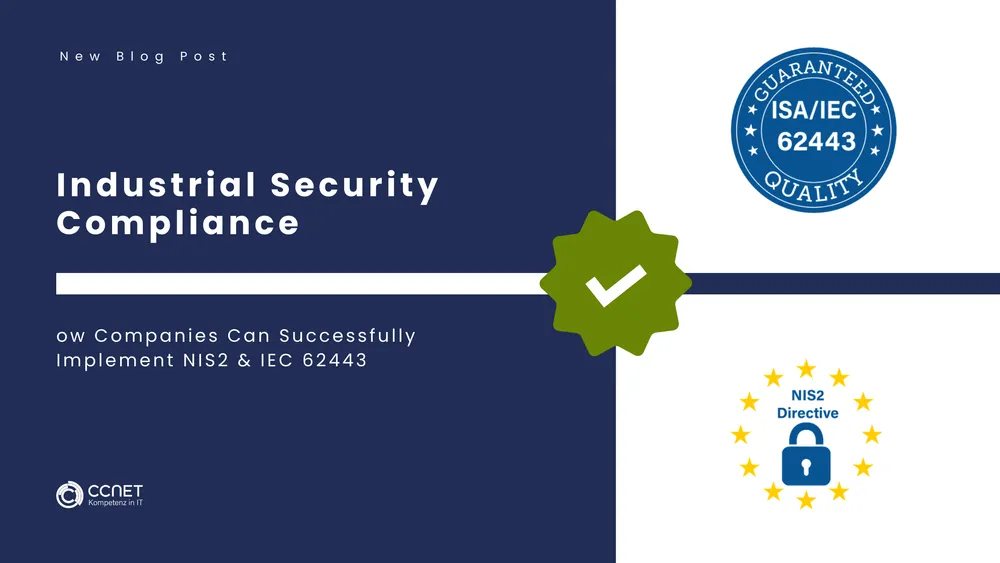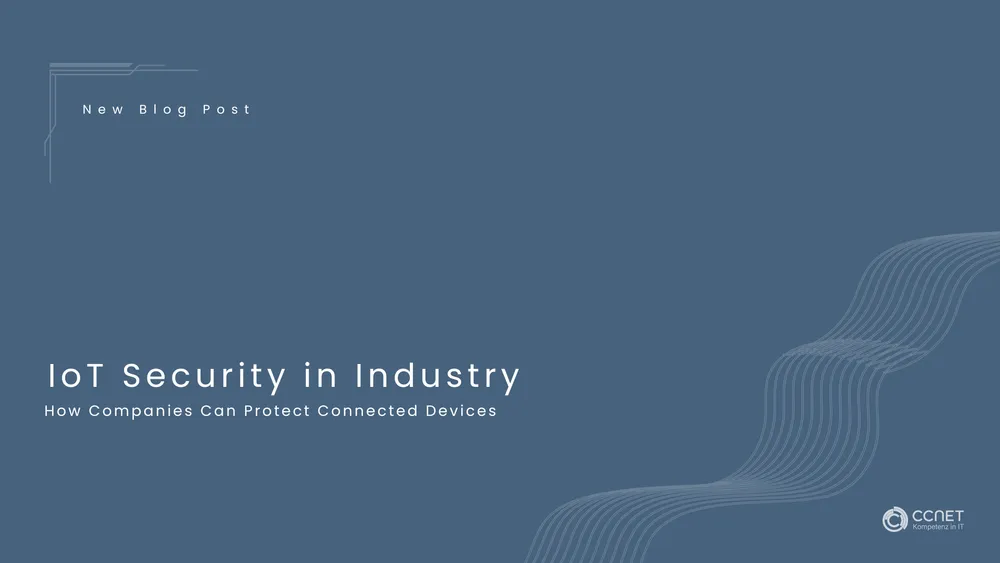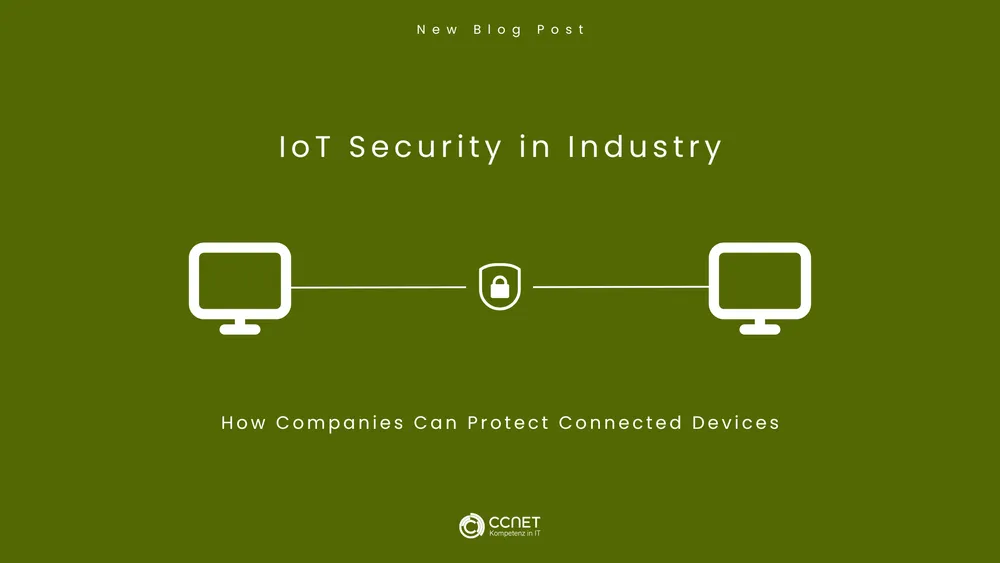
CCNet
May 16, 2025 • 3 min read

Industrial Security: Why an Incident Response for OT Environments Strategy Is Essential
Production networks have long been a target for Cyberattacks on OT – but how do companies respond when it happens?
Industrial companies are increasingly relying on connected machines, IoT devices, and digital control systems. However, many are not prepared to respond quickly to security incidents.
An attack on SCADA Controls, PLCs, or IoT devices can cause massive Production Security downtime.
Without an Incident Response for OT Environments strategy, the damage can escalate uncontrollably.
NIS2 & IEC 62443 require clear processes for responding to security incidents.
If a company only starts considering actions during an emergency, it has already lost.
Industrial companies must act now to establish a robust Incident Response for OT Environments strategy.
Further information can be found here: IT-Security
Why Is Incident Response for OT Environments So Challenging?
IT security teams are often well-prepared for Cyberattacks on OT, but industrial OT environments have unique challenges:
-
Real-Time Operations & Production Downtime
IT systems can often be shut down quickly – production facilities cannot.
Every response must consider Production Security availability. -
Outdated Systems & Lack of Patches
Many control systems (PLC, SCADA Controls) run on operating systems that are not regularly patched.
Attackers exploit known vulnerabilities that remain unaddressed. -
Unclear Responsibilities
Who responds to an attack – the IT team or production management?
Without a clear Incident Response for OT Environments strategy, valuable time is lost. -
Lack of Transparency & Security Monitoring
IT systems often have SIEM solutions, but OT networks do not.
Attacks are often only detected when machines stop functioning.
Industrial companies must integrate both IT and OT-specific challenges into their Incident Response for OT Environments strategy.
3 Real Cyberattacks on Industrial Companies – and What We Can Learn from Them
-
Ransomware Attack on an Italian Automotive Supplier (2022)
Hackers exploited an unpatched VPN access point and spread ransomware in OT and IT systems.
Consequence: The entire production operation was shut down for several days.
Lesson: A well-prepared Incident Response for OT Environments team would have isolated the ransomware more quickly. -
Attack on a Smart Factory in Germany (2021)
A compromised maintenance access point allowed hackers to manipulate SCADA Controls.
Consequence: Production machines operated outside specifications, leading to scrap and material loss.
Lesson: Strict access control and monitoring would have detected the attack earlier. -
Triton Malware on Industrial Safety Systems (2017)
Hackers directly targeted safety control systems (SIS) in a petrochemical plant.
Consequence: A potentially catastrophic incident was only prevented due to a lucky misconfiguration.
Lesson: Attacks on OT security systems must be considered a critical threat.
Conclusion: Cyberattacks on OT Are Real – Companies Must Be Prepared
The 6 Phases of an Effective Incident Response for OT Environments Strategy
A well-structured incident response plan is essential to minimize damage from Cyberattacks on OT.
-
Preparation – Preventive Measures Before the Attack
- Implement Network Segmentation between IT & OT.
- Use SIEM & IDS to detect attacks.
- Perform regular backups of critical control data.
-
Detection & Analysis – Identifying the Attack Early
- Real-time monitoring of OT networks using SIEM & IDS.
- Alerts for unauthorized access to SCADA Controls or PLC systems.
- Rapid forensic analysis to understand the attack pattern.
-
Containment – Preventing the Spread of the Attack
- Isolate affected systems to limit damage.
- Block compromised user accounts and disable suspicious network segments.
- Deploy emergency measures to minimize production disruptions.
-
Eradication – Eliminating Malware and Vulnerabilities
- Implement patch management for known vulnerabilities.
- Investigate attack vectors to prevent recurrence.
- Conduct forensic analyses to identify the attackers.
-
Recovery – Safe Return to Normal Operations
- Restore the production environment using verified backups.
- Perform test runs to verify the integrity of control systems.
- Gradually reactivate all production systems.
-
Post-Incident Review & Improvement – Learning from the Incident
- Detailed reporting for authorities and internal compliance.
- Adjust security strategy based on lessons learned.
- Employee training and awareness programs to prepare for future attacks.
Conclusion: Incident Response for OT Environments Is a Necessity – Not an Option
Production networks are the number one target for attacks – a fast response determines the extent of the damage.
Without a defined Incident Response for OT Environments strategy, companies are unable to act effectively.
Proper preparation can mean the difference between a short disruption and a multi-million-dollar shutdown.
Visit Us at SPS Parma and Learn How to Build a Robust Incident Response for OT Environments Strategy


